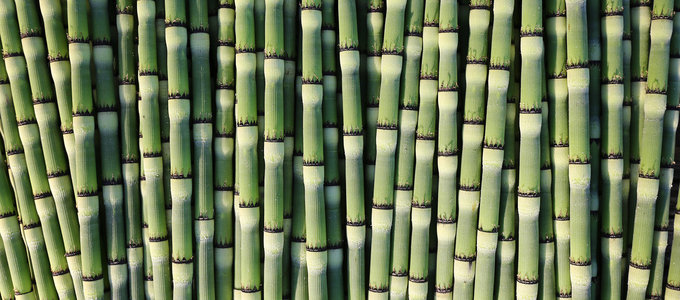Homeowners Beware of Invasive Bamboo!

For many years now bamboo has increased in popularity amid concerns about climate change and the need to reduce the effect on the environment. Bamboo is an eco-friendly and sustainable resource which is now used for many everyday products as well as being loved by Pandas.
In addition to its sustainability, bamboo plants can also be seen in many gardens throughout the UK due to its versatility and aesthetic appeal. The plants can add height, colour and provide privacy.
However, some types of bamboo are highly invasive as they grow and spread rapidly causing damage to lawns, patios, paths and even homes if not properly managed. Some species can start life as harmless non-invasive plants positioned in clumps, but as they grow, they change to be running bamboo which has more aggressive and fast-growing growth patterns.
Research conducted by Environet found that bamboo infestations are costing homeowners thousands and, unlike Japanese Knotweed, for which there is legal recourse if a seller fails to declare its existence in the Sellers Property Information Form (TA6), there is no such legal recourse for anyone who finds their new property has a bamboo infestation after they have completed their purchase.
For many years homeowners have been concerned about Japanese Knotweed, as awareness has grown in recent years, but which can cost thousands and take many years to fully eradicate. Now Homeowners should be aware of the risks with planting some species of bamboo plants.
Environet’s data does indicate that the existence of bamboo is being flagged by some surveyors but many are still failing to identify the problem despite 8% of homes in the UK currently being affected by bamboo, around 2 million properties. This includes not only properties with bamboo within the immediate land and buildings surrounding the home, but also the neighbouring properties due to shoots travelling 10m from the parent plant.
Bamboo Invasive Species
Invasive species that are known to spread and run in specific conditions include:
-
Sasa and Sasaella
-
Phyllostachys aurea – yellow stemmed
-
Phyllostachys P. nigra – dark stemmed
-
Pseudosasa japonica
-
Bashania fargesii
-
Semiarundinaria fastuosa
YouGov commissioned Environet to carry out a survey this year which indicates that where people are aware of a bamboo problem on a property, they are interested in purchasing, 24% would not proceed. A further 26% would insist on renegotiating the price to cover the cost of removing the bamboo and 32% would insist the seller removes the bamboo before they proceed.

Lawson West’s conveyancing Department Head & Licensed Conveyancer, Rachael Mitchell, warns of the potential impact of invasive bamboo if you are buying or selling a property and the importance of ensuring that any bamboo plants are managed properly to prevent them spreading.
The best restriction measures include:
-
Select less-invasive bamboo species to begin with
-
Grow bamboo in a container to stop roots spreading
-
Insert a physical barrier around roots when planting.
Read more:
How Bamboo Can Invade Your Garden and What to Do About It - Conservation Land Services Ltd
Bamboo control / RHS Gardening
View all


